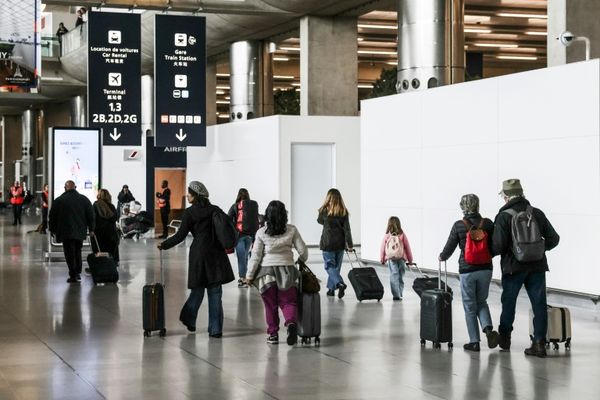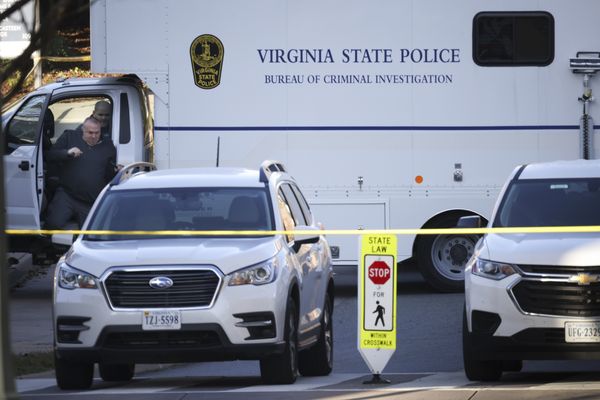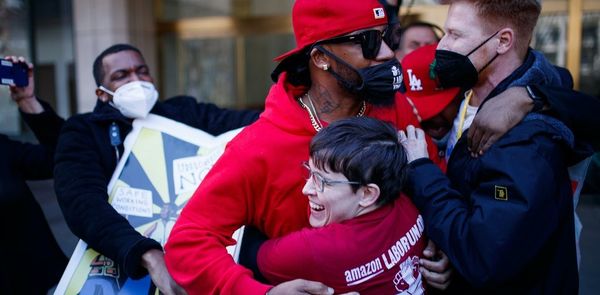A lack of leadership and too much focus on D.C. politics is holding back momentum around unionization, labor advocates familiar with internal workings at the AFL-CIO, the umbrella organization for 57 unions and 12.5 million workers, tell Axios.
Why it matters: With a sympathetic White House, a tight labor market and workers around the country voting to unionize, this should be Big Labor's moment. And grassroots efforts are taking off. But insiders say institutional labor is so far failing to live up to the challenge.
- Big Labor has overseen decades of decline, and isn't quite used to this kind of excitement around organizing.
State of play: The big unions are too focused on getting legislation passed in Congress and haven't paid enough attention to grassroots organizing efforts. "Labor can't just act or be perceived as a wing of the Democratic party," says Sara Nelson, president of the Association of Flight Attendants (part of the AFL-CIO).
- Institutional labor is out of touch, said one person familiar with the inner workings of the AFL-CIO who didn't want to publicly criticize their own organization. Too many union officers didn't start out as unionized workers — but instead rose through the ranks as staffers for the organization. "If you can't relate to the people you're representing, you're lost," the source said.
- "There's a lot of money spent on polls and focus groups. Each word gets tested," said another person who's spent decades at some of the biggest unions. "We kind of overlay what we think [workers] need, as opposed to what they really want."
- "For far too long our growth strategy has been entirely attached to politics, but that has failed us over and over,” Tefere Gebre, who just stepped down as executive vice-president of the AFL-CIO, told The Guardian.
Catch up fast: The successful Amazon union vote in Staten Island earlier this month is just one example of a grassroots effort that took Big Labor by surprise.
- Momentum for organizing has been building in the U.S. since 2018, when a record number of workers went out on strike, but it was the pandemic and the current labor shortage that really served to energize hourly workers in the U.S.
Yes, but: Big Labor has failed to capitalize on this energy, insiders say. During the height of the pandemic there was a real opportunity for so-called essential workers to bargain for increased pay and better benefits. They largely missed it.
- "We shouldn't have just been asking for hazard pay [back in 2020], but pay increases across the board," said the person familiar with AFL-CIO inner workings. "[Workers] had all the leverage."
"There has been a complete lack of leadership, vision, or strategy to meet this moment by bringing us together in the 'House of Labor,'" says Nelson, the flight attendants' union president. "But I see leadership in every workplace, every industry, on every picket line, and I know this is the moment that change is coming," she adds.
- In a column this week, Jon Hiatt, the former general counsel for both the AFL-CIO and the SEIU (the service workers union), calls for a systematic program organized at the national level to provide assistance to worker-organized efforts around the country. This would offer funding, legal advice, employer research and bargaining support that smaller grassroots efforts lack.
The other side: The big labor unions say they're excited by, and supportive of these recent wins.
- AFL-CIO affiliate unions are now lending the Amazon union office space, organizers, lawyers and advisers. "We have all the support we need to win a fair union contract for ourselves," the group says on its website.
- "The AFL-CIO’s priorities have always, and will always, be focused on making a difference in the lives of working people," said Liz Vlock, the organization's press secretary. "The best way to do that is to help workers organize and grow the labor movement. That’s what we do through the affiliates of the AFL-CIO."
- The SEIU wants to draw lessons from what the Amazon workers did in Staten Island, the union's president Mary Kay Henry, told Axios earlier this month. She said the labor movement has always succeeded when workers organize themselves.
- "In every organizing campaign that I've been in in the past 40 years, it's the leaders inside the workplace that make a decision to reach out to their coworkers, build the trust and create the leap of faith that is required [to unionize]."
Editor's note: We corrected Mary Kay Henry’s last name.










